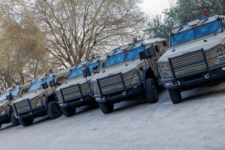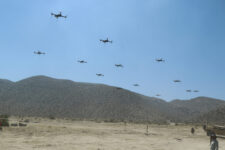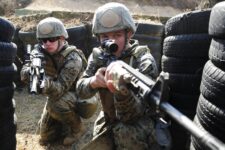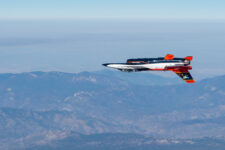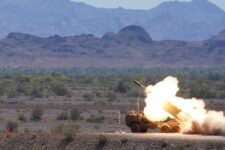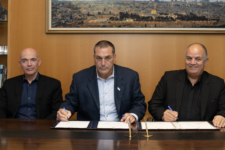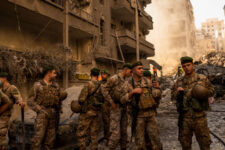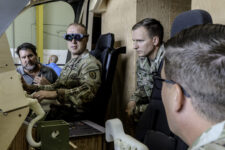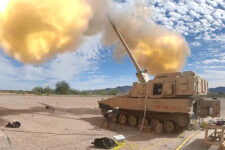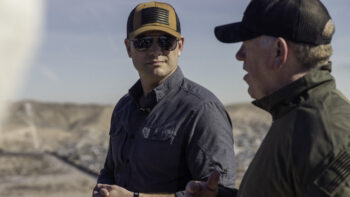
Over 480 UH-72 Lakota aircraft have been delivered to the Army across 47 states and territories. Image courtesy of DVIDs.
In this Q&A with Craig Dupuy, senior manager, National Guard Business Development for Airbus U.S. Space & Defense, we discuss the major impact the Lakota plays for U.S. Army and National Guard operations, and the details of the modernized UH-72 Bravo model fielded to nine states.
Dupuy is a retired Army Aviator who is rated in multiple aircraft including the CH-47 and UH-72, and performed a full range of missions while assigned to both the Joint Readiness Training Center and later in the Army National Guard.
Breaking Defense: What is the threat scenario today for the Army and National Guard today as it relates to usage of aircraft like the Lakota?

Craig Dupuy is senior manager for National Guard Business Development for Airbus U.S. Space & Defense.
Dupuy: The National Guard makes up a significant portion of the Army’s total force, so when you think of global threats, they are integral to the fight and to securing the nation. Guardsmen are trained to the same standards and can perform the same missions as their active Army counterparts. Specific to aviation, the National Guard represents 45 percent of the Army’s aviation enterprise. There is no difference in the threat scenario between the Army and the Army National Guard – both Army components are necessary to address the National Defense Strategy.
Unlike its active counterpart, the National Guard is unique in that it performs a dual role. When the Guard is not deployed forward or serving under federal authority, it operates domestically under the purview of the states ensuring security of the homeland. That is the day-to-day mission of many Guardsmen and where our 212 UH-72A and UH-72B Lakota quietly perform remarkably well.
In relation to specific homeland defense threat scenarios, missions the Lakota performs day in and day out include patrolling the Southwest border and carrying out counter-drug operations. The Southwest border has been an enduring concern for a long time and the need for surveillance and reconnaissance is increasing over time.
For counter-drug, the Lakota serves in myriad roles and supports civil authorities across the range of local, state and federal government. Aircrews perform a variety of operations including eradication, or, for example they’ll support the Drug Enforcement Agency or the FBI in providing surveillance to collect information and build cases against larger networks.
And then, of course, there are the more visible missions where the aircraft performs exceptionally well. The Lakota routinely supports disaster response and assessments, search and rescue, and at times works in tandem with authorities on firefighting – specifically the wildfires in the Western states.
Breaking Defense: Tell us a bit more about the versatility of the Lakota to perform different missions.
Dupuy: First, let me say that the Lakota is a highly versatile and reconfigurable aircraft that can be tailored for a range of missions and can perform in a range of conditions and environments.
There are several variations of the UH-72 used by the National Guard: They can be “slick” aircraft, which are utility helicopters without modification. They can be a Mission Equipment Package (MEP) helicopter that can be reconfigured based on the need. Or they can be specifically configured to serve as a MEDEVAC aircraft.
Slick aircraft routinely conduct missions focused on aerial movement of personnel and supplies, but are often used to perform search and rescue or other missions using its equipped hoist. The aircraft has become a staple within the response portfolio of state emergency operations agencies and the National Guard crews often train and partner with highly qualified civilian personnel to improve response capability for high-altitude or swift-water rescues.
MEP-equipped aircraft are equipped with a forward-looking infrared sensor, a searchlight, a data down link that allows for real-time transmission of data and video capturing capability. The primary role of the MEP aircraft is observation and reconnaissance.
As you can see, the Lakota is a multi-role helicopter that can do many things and it does it at a very low cost per flight hour while being easy to maintain. In reality, a Lakota could perform the full range of missions from utility to MEDEVAC to armed reconnaissance, although the aircraft is not currently performing that role within the Army.
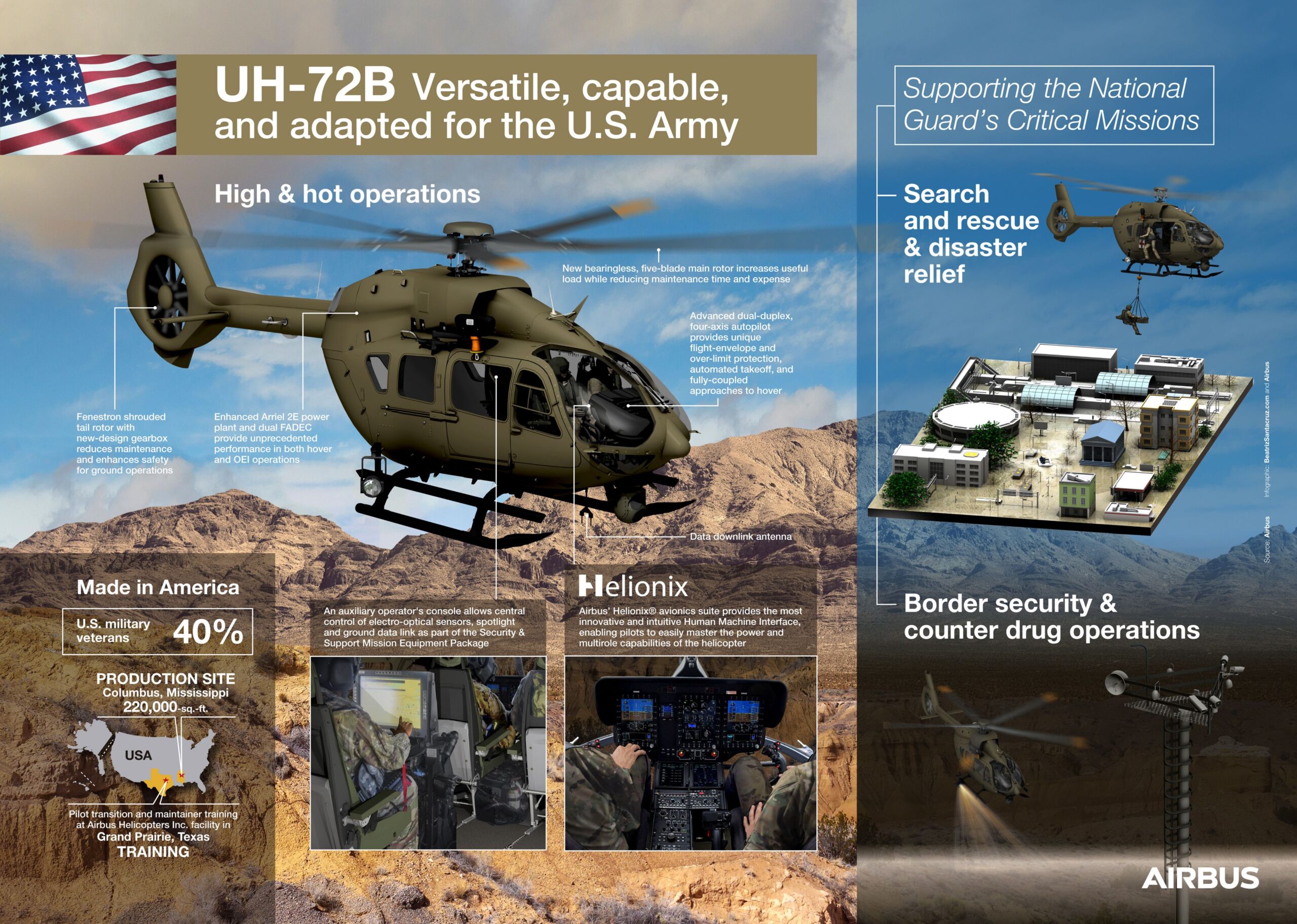
Breaking Defense: You say the Lakota is “enduring with growth.” How so?
Dupuy: The Lakota is an enduring platform. It’s going to be here for a while. It has the capability to perform its current missions and it has growth potential to expand its role to whatever is needed. Additionally, don’t forget about the advantages a commercial off-the-shelf approach brings to the Army when it comes to adding capability faster, on-schedule and at a lower cost.
Compared to other aircraft in the Army’s fleet, the Lakota was introduced in 2006, so the fleet has a lot of life left on it. From an economic sense, the current aircraft performs very well for its prescribed missions, has excellent availability and maintainability, and can take on more of the workload, if needed.
Looking at some of the operational statistics, a rotation of 24 aircraft patrolling the Southwest border over a one-year period flew nearly 14,000 hours. That’s nearing the combat deployment numbers of other Army aircraft fleets.
Coupled with the availability and how that’s achieved fleet wide, accounting for the entire fleet of 479 Lakota aircraft, we average roughly 90 percent availability. The overarching Guard fleet availability generally runs around 80 percent, which is very good compared to a lot of the other Army fleets.
When you look at the Lakota from the supply side, we run a non-mission-capable supply rate on average of less than five percent, arguably the Army’s lowest across any fleet. That translates to aircraft not sitting on the ground waiting for a part and more time spent on mission saving lives and supporting those in need. That low number is the result of an effective Contractor Logistic Support program that we provide to the U.S. Army.
It’s important to remember that Lakota is the Army’s third largest fleet. It’s larger than the Chinook fleet. It’s nearly 75 percent of the size of the Apache fleet. And will remain a staple in the Army’s aviation plans going forward.
Breaking Defense: Enduring with growth means introducing pathways to modernization, such as what you’ve done with the UH-72 Bravo that you’re displaying at the 2023 National Guard NGAUS show and has been fielded to nine states. Tell us about that.
Dupuy: When you have an aircraft that makes economic sense and is enduring, you need to look at the growth path and value proposition. That is what we’ve done recently with the fielding of the new UH-72 Bravo to the National Guard. Introduction of the modernized aircraft reduces cost over the lifecycle by allowing for the removal of the oldest aircraft, not unlike the lifecycle management of other Army systems.
The UH-72B benefits from numerous product improvements developed during continuous improvement of the commercial Airbus H145 helicopter. That starts with improved power, controls, and safety of the aircraft. Additionally, a new bearingless, five-bladed rotor increases the aircraft’s load capacity while reducing expense and maintenance.
The Fenestron shrouded tail rotor comes with a newly designed gearbox that reduces maintenance and enhances safety for ground operations. The Fenestron is not just for looks; it makes the aircraft quieter and more responsive. By instituting that design, we were able to remove a transmission out of the tail rotor system.
An enhanced Arriel 2E power plant and dual FADEC generates more power, and a four-axis autopilot strengthens controls and allows for automated takeoffs.
Pilots benefit from the advanced Airbus Helionix avionics suite, which provides the most innovative and intuitive human-machine interface. Features like synthetic vision allow some overlays to be put into your flight displays. Other capabilities include a four-axis autopilot, which makes the aircraft much more stable, responsive, and improves safety for the pilot.
We worked hard to find innovative ways to improve the experience for the pilot, taking into consideration the situational awareness, safety, capability and performance, while at the same time reducing sustainment costs on the aircraft. The result is the introduction of the Bravo.
One thing that is rarely discussed, but is equally important, is that Airbus made these upgrades at no cost to the government. There’s no research, development, testing and evaluation money (RDT&E) associated with Lakota modernization. It all is a result of the aircraft improvements we’re making on the commercial H145 side, and understanding what pilots need to be successful. This is not the case with other military fleets.
Breaking Defense: The Lakota is also a primary training helicopter for the Army and National Guard.
Dupuy: Yes, the Army currently has 223 UH-72A Lakota aircraft at Fort Novosel in Alabama. Every aviator in the Army is initially trained on a Lakota. Since inception about five years ago, we’ve had 6,000 students go through training in that time period. To dig a little deeper, the Lakota afforded the Army the ability to fly 40 percent more hours and train 40 percent more pilots with 40 percent less aircraft.
The Lakota makes a good trainer as it provides an easy transition into the go-to-war modernized aircraft. You are learning on a glass cockpit. You are learning with autopilot features. You can still destabilize and get the basic flight concepts and the auto rotations, but training in a Lakota makes it easier to go into a dual-engine, more-complex airframe.
Breaking Defense: You’ve already described the importance of the Lakota to Army operations and homeland defense. As such, it’s also an important member of the US industrial base.
Dupuy: The UH-72A and UH-72B are built at the Airbus helicopter production facility in Columbus, Mississippi, where the workforce is composed of more than one-third veterans. Airbus is a trusted OEM that capitalizes on the depth and breadth of the larger Airbus enterprise and that benefits the U.S. military.
Looking at commercial helicopters, Airbus has approximately 50 percent of the global market share. The nearest competitor is less than half that. Airbus brings to the table an unparalleled capability, a global supply chain to support its helicopter fleets, and particularly to the Lakota, millions of flight hours across the H145 family that brings experience and proven performance.
Airbus has made over 480 on-time deliveries of the Lakota to the U.S. Army and Army National Guard. We never missed a delivery time schedule and that’s because of our global capacity, our workforce, and our commitment to our users.
